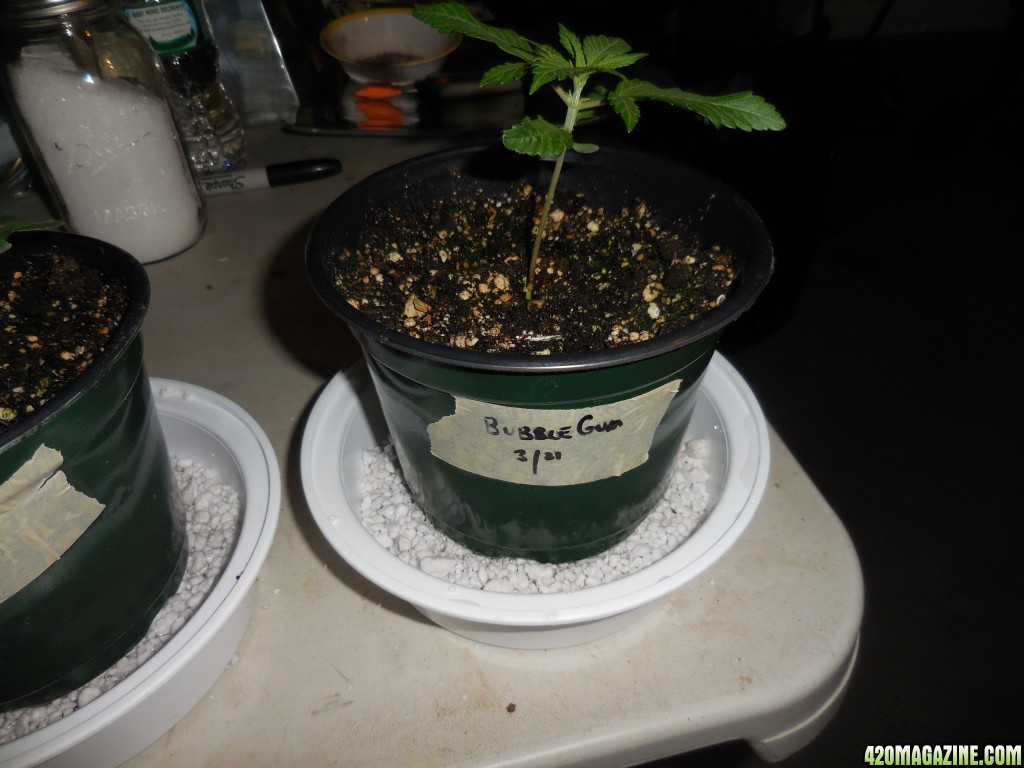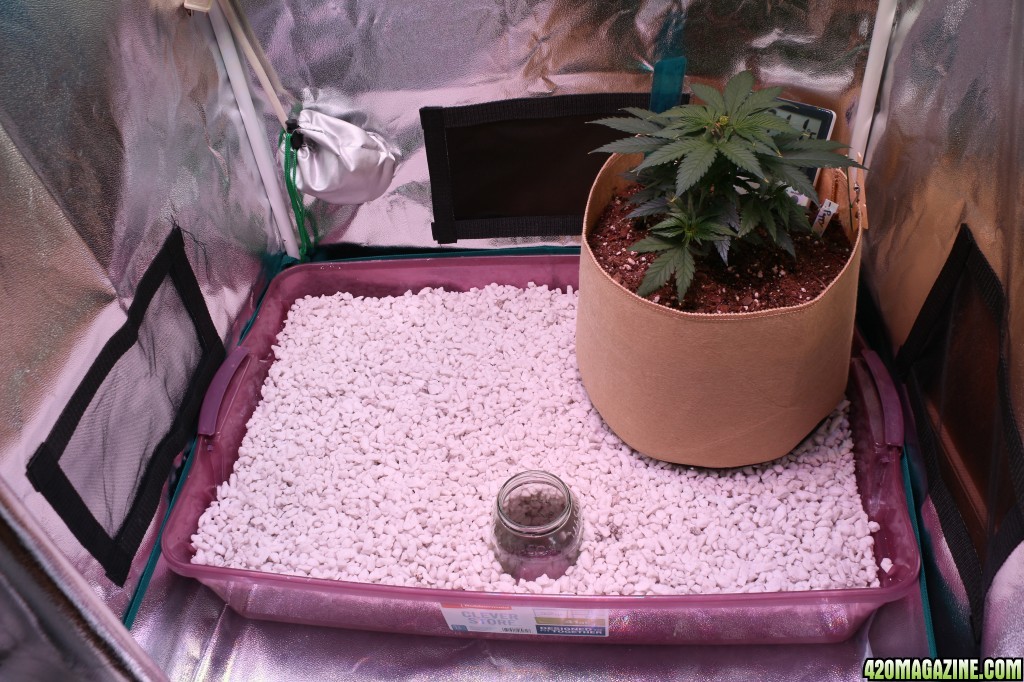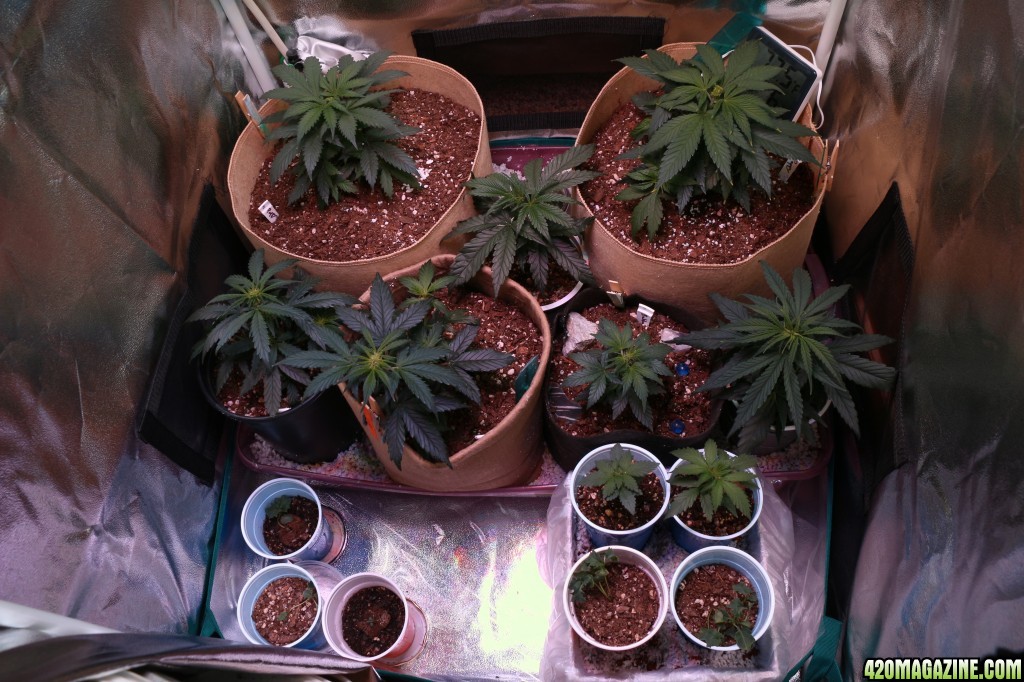So good!Hello youI just posted at the same time you did. Hope your first shift went well!
So so good.
How To Use Progressive Web App aka PWA On 420 Magazine Forum
Note: This feature may not be available in some browsers.
So good!Hello youI just posted at the same time you did. Hope your first shift went well!
What would you do to mix the soil up? I guess I can tip it out onto a plastic sheet and try to get a decent mix going but what a pita.Them's some happy babies!
I've personally never understood layering soil since there are roots from top to bottom in a pot, so why would you want some of them to get one kind of soil and other roots to get different kind?
Seems like it would be if I gave my plants a little water on top with one strength nutes and bottom fed them a different strength!
How sensibleI just use a big plastic flower pot with the holes duct taped to keep the soil from spilling out. Mix some of each and transfer it to the working pot, then mix the next batch.

I've not seen that post but it sounds like she is not using connector material (rope, cotton, etc.) at all, but simply nestling her pot down into a container of perlite that has water in the lower part. If so, a saucer won't be deep enough to hold any reasonable amount of water.Unfortunately Sue is not around to ask her questions. @Azimuth you seem to have you head around the different wicking methods. If I used the plant saucers to hold the perlite, couldn't I use two 2 liter plastic milk cartons to fill the saucers wick from the bottles on demand? Diagram to follow as soon as power is back.
I don't know Hempy, but this is what she is calling a Swick. Never mind the terminology for now. I am interested in the principle and the efficiency of self-watering plants. Please take a look at my diagram below and tell me if you think this could work.I've not seen that post but it sounds like she is not using connector material (rope, cotton, etc.) at all, but simply nestling her pot down into a container of perlite that has water in the lower part. If so, a saucer won't be deep enough to hold any reasonable amount of water.
Her's sounds more like a modified Hempty pot.
Her's sounds more like a modified Hempty pot.
Bluter, do you think the setup in my diagram can work? Will the water wick from the bottles to the saucers?swick uses an external res. hempy uses an internal. there's not a lot of difference between a sip system and hempy. hempy works best with neutral media where sip systems can be used with soils or peat based media.
Bluter, do you think the setup in my diagram can work? Will the water wick from the bottles to the saucers?
The perlite itself will have some wicking properties, just not as much as the cord wick. With your setup I would be concerned that the wick would move water faster from the 2L bottle than can be used by the plant and the excess would overflow the saucer.I don't know Hempy, but this is what she is calling a Swick. Never mind the terminology for now. I am interested in the principle and the efficiency of self-watering plants. Please take a look at my diagram below and tell me if you think this could work.
The fabric pot is resting squarely on a mound of perlite which serves as a wick between the reservoir and the fabric pot. There is a wick leading from a 2 liter feed bottle into the saucer of perlite to wick water from the bottle into the perlite mound. Can this work?

I hear you. I might experiment a bit.it'll wick water. the question is will it be at the correct rate ? will it be too much ? will it not be enough ? there's a danger on either side of the equation.
Not much, I'd need to buy more if I was to adopt that method of watering.have you got any perlite ?
How about if I inserted the wick into the plant pot itself and fed directly from the 2 liter bottles?The perlite itself will have some wicking properties, just not as much as the cord wick. With your setup I would be concerned that the wick would move water faster from the 2L bottle than can be used by the plant and the excess would overflow the saucer.
Is that a reservoir underneath the plastic?if you got perlite just put them in a tub of the stuff with a couple litres of mild feed. you'll have to open the bottoms of the cups they are in to contact the perlite. either use a bunch more holes or cut the bottom and use a screen etc.
this is close :

needs a bit more perlite and more contact with the grow media.
Is that a reservoir underneath the plastic?
Yes, that is the concept I've been suggesting. Then the issue becomes how high do you place the 1L bottle as the level of the water in the bottle will determine the flow rate, the higher the bottle, the faster the flow, and that will slow as the water level falls in the bottle.How about if I inserted the wick into the plant pot itself and fed directly from the 2 liter bottles?
Keep in mind that hempy is top fed rather than relying strictly on wicking action to keep the top roots moist.Those seem to wick water high enough in the bucket to keep plants quite happy
Keep the entire reservoir below the pot like in the "pot suspended over a bowl" idea, and you'd get a fairly even "flow" rate.
Keep in mind that hempy is top fed rather than relying strictly on wicking action to keep the top roots moist.
Thank you Bluter! These systems are big and I think they would be problematic on the dining room table, which is where the plants get grown. I am interested to see if I can scale it down. What if I were to use a plastic dish washing bowl full of perlite with the fabric pots directly on the perlite?yes. it works better with fabric pots. this is a larger swick set up on a mature plant.

other swick pots will go in to it and share the res

a lot of swick folk still top feed, but will remove the buckets to drain. the res is left with straight water, or a mild feed solution. some folk bottom feed from the res, most wait til late veg or flower.
